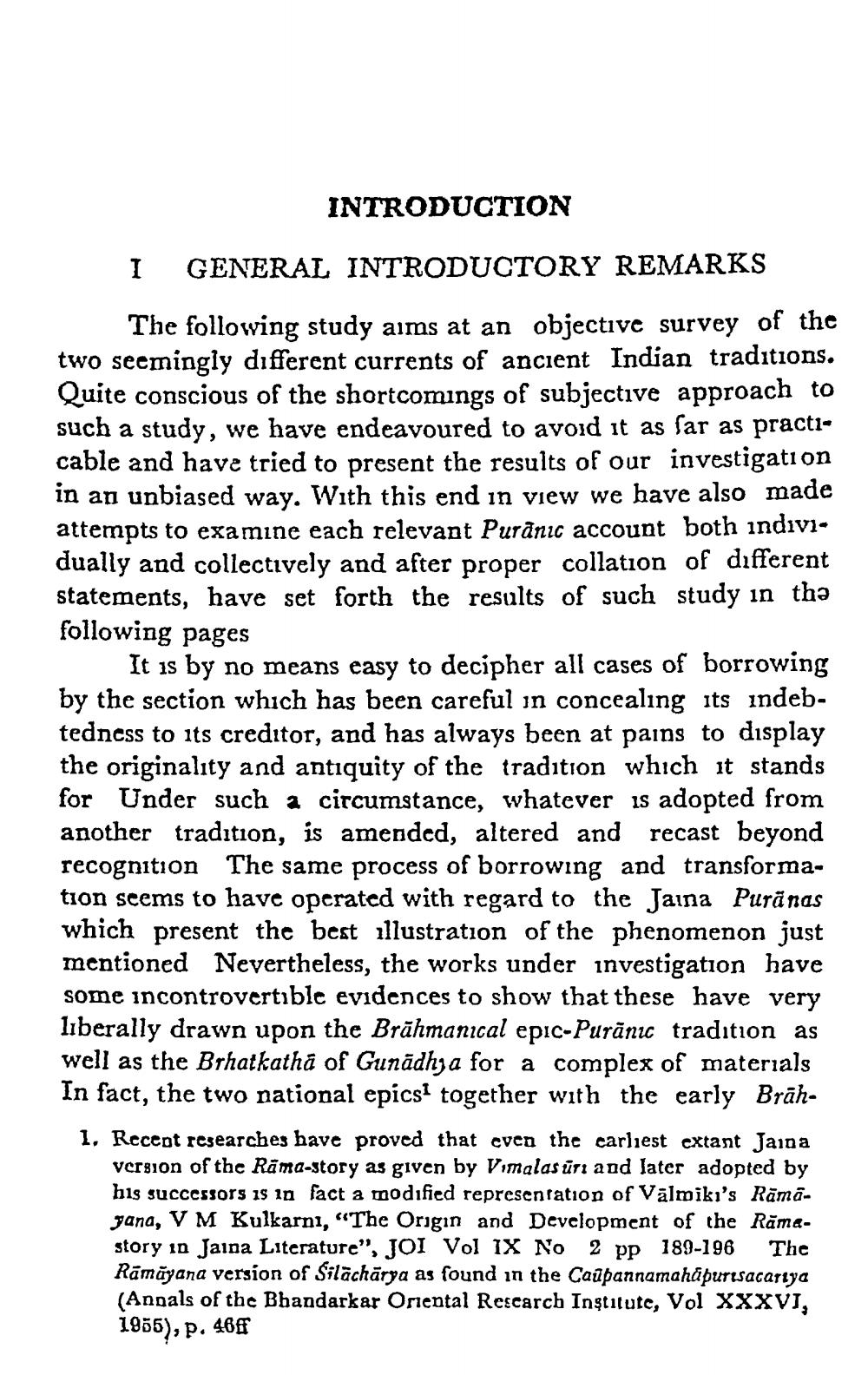________________
INTRODUCTION
I GENERAL INTRODUCTORY REMARKS
The following study aims at an objective survey of the two seemingly different currents of ancient Indian traditions. Quite conscious of the shortcomings of subjective approach to such a study, we have endeavoured to avoid it as far as practicable and have tried to present the results of our investigation in an unbiased way. With this end in view we have also made attempts to examine each relevant Purānic account both individually and collectively and after proper collation of different statements, have set forth the results of such study in thə following pages
It is by no means easy to decipher all cases of borrowing by the section which has been careful in concealing its indebtedness to its creditor, and has always been at pains to display the originality and antiquity of the tradition which it stands for Under such a circumstance, whatever is adopted from another tradition, is amended, altered and recast beyond recognition The same process of borrowing and transformation seems to have operated with regard to the Jaina Puranas which present the best illustration of the phenomenon just mentioned Nevertheless, the works under investigation have some incontrovertible evidences to show that these have very liberally drawn upon the Brāhmanical epic-Purānic tradition as well as the Brhatkathā of Gunādhya for a complex of materials In fact, the two national epicsl together with the early Brāh1. Recept researches have proved that even the earliest extant Jaina
version of the Rama-story as given by Vimalas üri and later adopted by his successors is in fact a modified representation of Valmiki's Rāma. yana, VM Kulkarnı, “The Origin and Development of the Rāma. story 10 Jaina Literature", JOI Vol 1X No 2 pp 189-196 The Rāmāyana version of Silāchārya as found in the Caupannamahapurisacariya (Angals of the Bhandarkar Oriental Rescarch Institute, Vol XXXVI, 1955), p. 468




